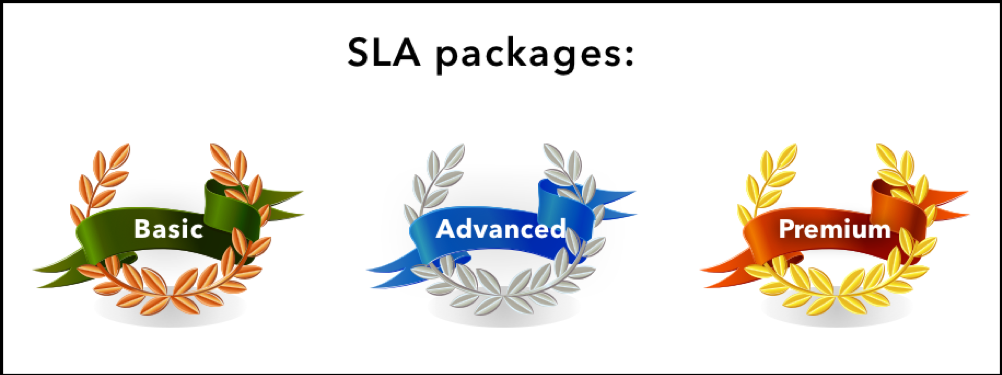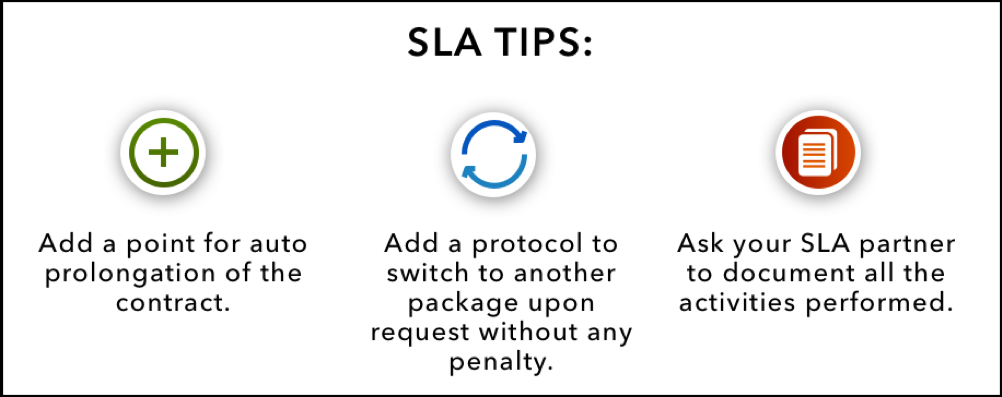How to Begin the SLA Process for Your Product

How to Begin the SLA Process for Your Product
Contributed ContentBefore releasing a new product, it may be a good time to consider having an SLA with your development team. Think about what structures need to be in place before taking this crucial business step.
When software is developed and released, it is of high importance to think about further maintenance and support of your product. A Service Level Agreement (SLA) is an outsourcing contract between a service provider and a customer.
I work at Code Inspiration, an outsourcing company that serves clients all over the world and is listed amongst the top outsourcing agencies on Clutch. During my career, I noticed a high demand for supporting already developed software.
Along with explaining the context behind an SLA and its important details, this article will also show how SLAs can serve business needs.
5 Tips for an Effective SLA Contract Process
- Determine if an SLA is necessary
- Select your package
- Structure the contract
- Search for discounts
- Document the activities
Step 1: Determine If an SLA Is Necessary
SLAs indicate the important details regarding the maintenance and development of the additional functionality of the existing software. Usually, it contains a description of services, duties, and responsibilities of each party, details regarding the management reporting, frequency of updates and releases, as well as penalties for the breach, protocol for changing the scope and termination of the contract.
These agreements are aimed at long-term cooperation, and in most cases, the minimum term of such a contract is considered to be six months. The average term is a year with the option to prolong the contract.
In practice, it is rare when an already-released software that needs maintenance won’t require additional development. In most cases, the main goal is to maintain the initial software and to provide users with new functionality and updates in order to keep the business and the product grow.
It is quite important to check all general points of the contract; however, the most important part is the “package” where all the important details about the reporting frequency and efficiency from the development office would be stated.
Step 2: Select Your Package
Besides general information about the scope of the project, services, duties, and responsibilities of the party, an indispensable part of any SLA in outsourcing is the so-called “package” selected by the customer. Providers divide their agreements into three packages.

Users can try a basic, advanced, or premium package. Each one will contain the following details:
- Price per month or per year
- Issues removal time
- Maximum number of releases cycles per month
- Technical support
- Information support for application users
- Prepaid time for application revision and improvement
- New version release of OS
- Changes to third-party APIs
- Problems with specific devices
While this seems like an extensive list, an SLA package contains other elements as well.
An SLA package will include the possibility to set the tasks via Jira or any other management tool. The premium package will most likely include all the above-mentioned points together with a possibility to contact a PM directly via call or email.
The more expensive the package - the more efficiently issues would be fixed, more releases would be possible within a one-month term, the faster your tech support and the information support would be.
If the basic package is usually more oriented at simple maintenance of the existing software, other packages will most likely include the possibility to get the application revisions and improvements together with the development of additional functionality.
When signing an SLA agreement with your service provider, pay attention to the general part of the contract and select the package that will suit your business goals for the next half a year or longer. This will bring you stability and the possibility to focus on business goals instead of issues that might arise.
Step 3: Structure the Contract
When customers ask what they need to sign an SLA agreement, or if they can simply proceed with a Time and Material option, the answer is simple. Most of the software issues need the immediate help of developers and the identification of the problem.
When it comes to SLA, you have a development team that’s assigned to your project and knows all of the insights and important logic.
It will depend on the SLA package that you select with your service provider; however, SLA will provide you with the stability of fixing issues and reports if the issue is not on the tech side and the user is simply doing something incorrectly.
The tricky moment here is if you have a big application and there would be most likely not few items to develop additionally from time to time, but there would be a full-time load for the team which is assigned to maintain your software.
Instead of moving forward with an SLA contract and paying for additional development according to the time and material model, a good option would be to hire a dedicated team and discuss any of the urgent issues when it is needed and then simply get back to the development of planned functionality.
Always keep in mind, packages are done in a general way and are according to the average needs of clients. There is always room for negotiations when it comes to your own customized package.
Step 4: Search for Discounts
If conditions in the basic package don’t meet expectations and the full scope indicated in the advanced package isn’t for you, outline the critical items and customize the package for your contract.
Let the provider know that you need a “middle price” between the packages.
If you’ve selected the package that suits you perfectly, there is an option to ask for a discount. Usually, you would pay monthly for the services.
Propose to pay in advance of 6 months, but ask for a 5-15% discount for the total price of the SLA. This simple option before signing an SLA might save you up to 15% of the total amount.
Step 5: Document the Activities
When you have finished with all the negotiations, do not forget to document all the activities. Before the SLA is signed by parties, it is a good idea to keep all the conversations you had in a written form.
If the negotiations were done in person or via a call, it is considered to be a good practice to document the main items and send them via email just after the call.
Documenting the activities will help you not to forget the results of any stage of your negotiations and to avoid having to re-discuss some points twice. Having a well-documented scope of SLA that you can provide to your lawyer to finish the document will save time.
To ensure a successful partnership, there are several tips to make sure the SLA works efficiently for both sides. In case of emergency, all of the activities performed by the development team. If the developer can’t proceed with the project, you will have documented items for the new team that they can study from.

You can add a point for auto prolongation of the contract with the same team composition.
Also, add a protocol to your contract that allows you to switch to another package without any penalties. Switching packages might be difficult, so it’s best to know upfront.
Does an SLA Make Sense for Your Business and Product?
Maintaining software is an important part of business success. In order to prevent an engagement ending without any development support, signing an SLA will keep that intact.
Thinking about this ahead of time is just the first step in the decision-making process.
Combining maintenance and additional functionality shouldn’t impact the end-user. Look through SLA package options and outline what aspects are crucial to the success of your product.
